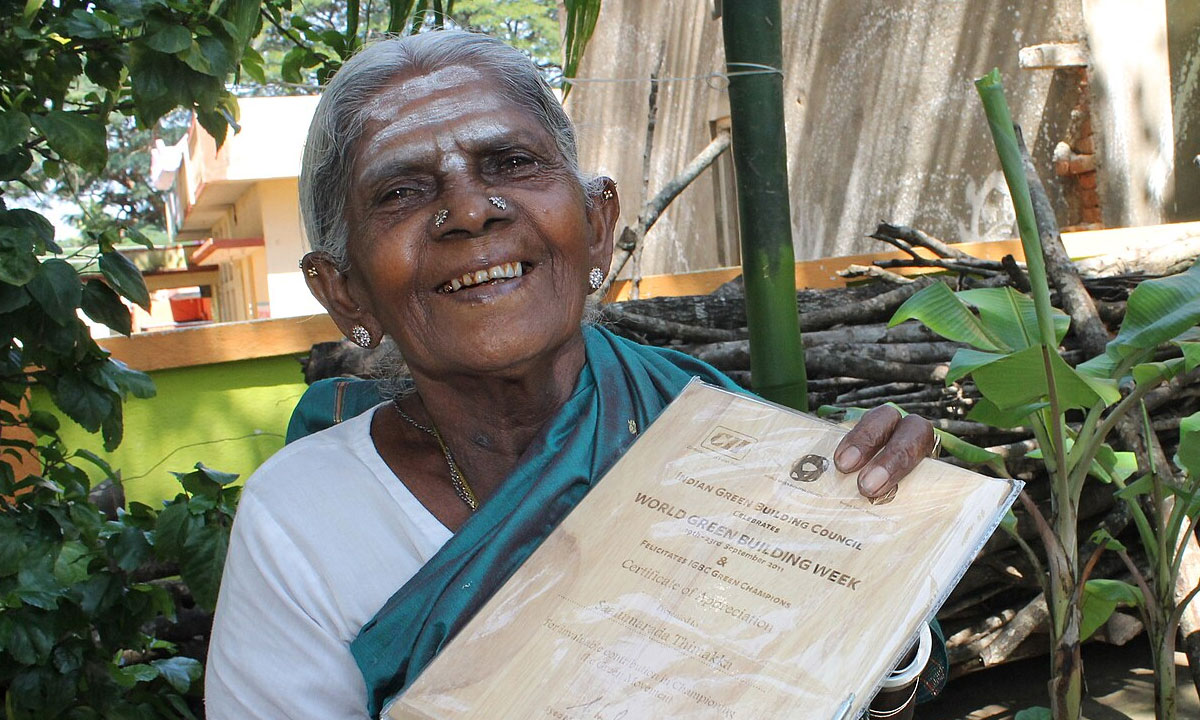
In an era of dire climate crisis and intensive deforestation, the story of Saalumarada Thimmakka, affectionately called the “Mother of Trees”, stands as an inspiration for all. Born in a small hamlet in what is now the Tumakuru/Ramanagara region of Karnataka, transformed a private lament into an ecological success. In Kannada, Thimmakka translates to “Row of Trees”, and the lady did turn this literal meaning into reality. Born into poverty and lacking formal education, she worked as a casual labourer in a nearby quarry. She was childless for years, and it was this grief that nudged her and her husband, Chikkaiah, to find their solace in nature, by considering trees as their own children. Her way of life is exemplary before everyone. She upholds the true spirit of grassroots environmentalism.
Planting Hope Across Karnataka
The couple began the mission in the 1950s, and it was not an easy task to accomplish. Over the decades, they have planted 385 banyan trees (Ficus benghalensis) along a once-barren 4.5-kilometre stretch of the highway between Hulikal and Kudur in the Ramanagara district. They utilized their limited resources, carried four pails of water for a distance of up to four kilometres daily to water the saplings, and protected them from grazing cattle by fencing them with thorny shrubs. They strategically selected the monsoon season for planting. This tedious job was persistently executed by the couple, resulting in 8,000 trees across Karnataka. This vast, green legacy is why she is reverently known as “Vriksha Mata” (Mother of Trees). This contribution earned her the prestigious Padma Shri in the year 2019.
Her approach demonstrated that local knowledge and small daily efforts can also lead to a bigger public good. In recent times, the Karnataka government, to pay tribute to her life, announced large-scale sapling drives and memorial initiatives to plant native species across districts. These state-driven initiatives impart the gesture that demarcates that one’s personal stand or practice can also drive a policy-level change, and develop strong public sentiment, if channelized with an apt motive. Today, Thimmakka earned global recognition and is mentioned in international lists of inspirational women.
A Vision of Green Life
Her inspiring journey from being a nobody to a global icon is a testament to grassroots activism. The trees planted by her and her husband are now mature, majestic banyan trees, providing shade, clean air, and a home for innumerable birds and animals. The ecological asset value of just the 385 banyan trees has been estimated at over 1.5 million rupees. However, it would be shallow to assume that her influence is only in the ecological niche. Thimmakka’s life has guided policy and education in Karnataka. The model of community-based afforestation, practiced by her, is adopted by the Forest Department. The state government has also established the Saalumarada Thimmakka tree parks in her honour. Furthermore, her inspiring story is also a part of the children’s curriculum in schools that motivates the upcoming generation to conserve, preserve, and transform their surroundings into a more naturalistic and peaceful abode. Her work has also traced a spot in national discussions on the expansion of India’s green cover and promoting citizens’ participation in this mission.
| Milestones | Details |
|---|---|
| Primary Achievement | Planting and tending to 385 banyan trees along a 4.5 km highway stretch between Hulikal and Kudur. |
| Total Trees Credited | Over 8,000 trees, including banyan and other native species across Karnataka. |
| Moniker | Known as “Saalumarada Thimmakka” (Row of Trees Thimmakka) and “Vriksha Mata” (Mother of Trees). |
| Motivation | Found purpose and solace in nurturing trees like children, overcoming the emotional pain of childlessness. |
| Key Location | Hulikal and Kudur village, Magadi taluk, Ramanagara district, Karnataka. |
Key Highlights
- Planted and nurtured hundreds of banyan trees along a single highway, turning a barren roadside into a cool, green corridor.
- Used simple, low-cost techniques (grafting, seasonal timing, thorny fencing) that helped saplings survive in harsh conditions.
- Her practice grew into advocacy: she persuaded officials to protect mature trees when road-widening threatened them, showing civic influence beyond the nursery.
- Honoured with National awards, and held up as a model of how individual action can influence state afforestation policy.
- Indira Priyadarshini Vrikshamitra Award (1997): National award recognizing her work as a ‘Friend of Trees.’
- BBC’s 100 Women (2016): Listed among the world’s most influential women, bringing her story to a global audience.
- Nadoja Award (2010): Honoured by Hampi University for her commitment to conservation.
- U.S. Environmental Organization: Thimmakka’s Resources for Environmental Education, a U.S.-based organisation, is named in her honour.
It is also important to acknowledge that she faced plenty of hardships on her way to achieving what she achieved. For years, she asked for material and institutional support, but due to a lack of formal recognition, she was denied these resources and was forced to bear the costs all by herself. Her story essentially offers a dual query: how do we honour symbolic figures, and how do we translate applause into sustained systems that support local ecological labourers and caretakers? Admiration alone can not fulfill the ground-level requirements meant to fulfill an undertaken mission; it requires support and participation to make an impact that will be the trailblazer of change.
The Legacy
Saalumarada Thimmakka’s legacy is not meant to be restricted within the ambit of greens; what she represents is a way of life, a bigger agenda of change, a perception that shall make the world a better place to inhabit. Her dream of getting a hospital built in memory of her deceased husband is a tribute to grassroots heroes. Her passion proves that, to do something meaningful, one does not require a lot of wealth or high-end technology; accomplishments can be built through the most simplistic and overlooked paths, which are less trodden. The trees she planted are a hope for a better future.







